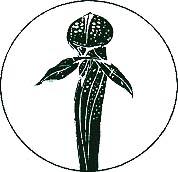|
*
 |
Drosera rotundifolia. Round-leafed sundew. Growing wild in north Wales. |
|
Drosera rotundifolia. Round-leafed sundew. Detail of a leaf and the sticky droplets which give the group their common name of 'sundews'. |
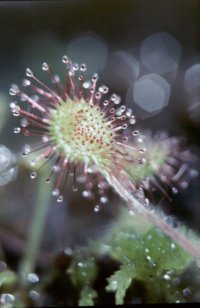 * * |
|
*
 |
Drosera rotundifolia. Round-leafed sundew. The leaves are 'active' in that they will curl up around prey. Not at the same sort of speeds that a Venus's Fly Trap leaf will close, but almost perceptible. |
|
Drosera intermedia. The Intermediate sundew. Another native of the British isles. |
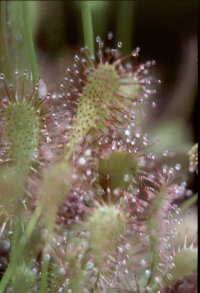 * * |
|
*
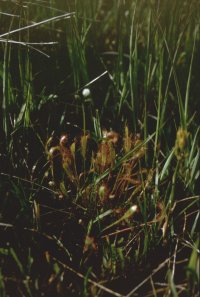 |
Drosera anglica. English sundew. Here growing wild in Scotland. |
|
Drosera binata. Forked sundew, a native of Australia. The flower is about 1 cm across. |
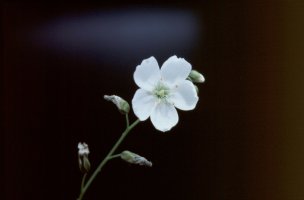 * * |
|
*
 |
Drosera capensis var alba. Cape (as in South Africa) sundew. The flowers of this species are normally pink in colour; not so in the case of this well-known variety. |
|
Sarracenia leucophila. The genus Sarracenia are the North American pitcher plants. This specimen was at Kew Gardens. |
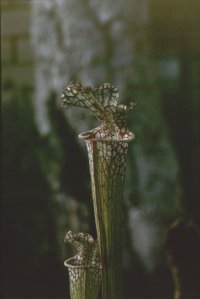 * * |
|
*
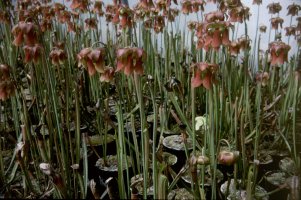 |
Sarracenia rubra. Ruby pitcher plant. At Marston Exotics. |
|
Darlingtonia californica. The Cobra Lilly. Not a true lilly at all; closely related to the other North American pitchers. |
 |
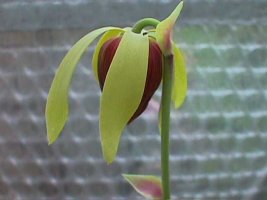 |
Darlingtonia californica. The Cobra Lilly - detail of the flower. The name comes not from the flower, but from a forked-tounge-like arrangement which is part of the pitcher, and forms a landing area for unwary flies before they are lured into the trap. The CPS have used the pitcher for their logo (below). |
|
Nepenthes macfarlaneii (?). These pitcher plants, sometimes known as the 'Monkey Cup Pitchers' are found in a range extending from Madagascar to Borneo across the Indian sub-continent. This plant is in Kew Gardens. |
 * * |
|
*
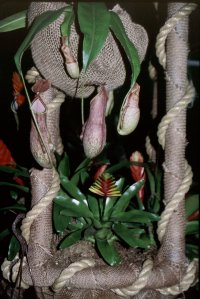 |
Nepenthes spp (possibly the hybryd 'coccinea'). This plant was on display at 'Floriade' in 1992. The Floriade plant pestivals are held every 10 years in Holland. |
|
The 'main' display of carnivores at Floriade 92. They
were in a completely enclosed growth cabinet, making photograph difficult.
The purple flowers belong to Butterworts - probably the mexican species
Pinguicula moranensis. Some Sarraccenia pitchers and sundews
can also be seen.
|
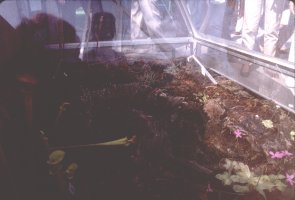 * * |
| The
Carnivorous Plant Society (UK) |
| Last Updated 18 Feb 2001 |
 Send
eMail
Send
eMail |
